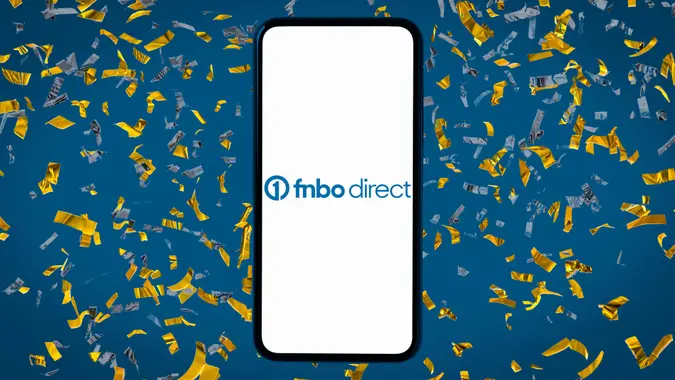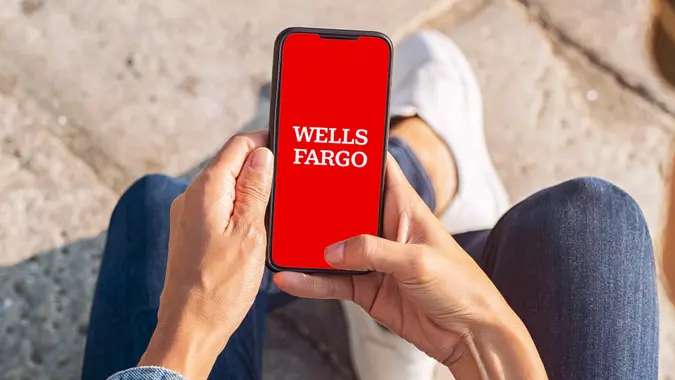Can You Trust Your Bank? 5 Key Things To Look For

Commitment to Our Readers
GOBankingRates' editorial team is committed to bringing you unbiased reviews and information. We use data-driven methodologies to evaluate financial products and services - our reviews and ratings are not influenced by advertisers. You can read more about our editorial guidelines and our products and services review methodology.

20 Years
Helping You Live Richer

Reviewed
by Experts

Trusted by
Millions of Readers
Americans have been leery of banks since the financial crisis of 2007. People lost their homes and their jobs, and today, many are still struggling to recover — even as they see banks and lenders doing just fine. According to popular opinion, banks deserve suspicion at best and condemnation at worst.
Not all financial companies are considered untrustworthy, however. One segment that has succeeded in keeping customer trust is the financial technology sector. Fintech companies have spent the last decade developing consumer relationships rooted in transparency and simplification, and their account growth is skyrocketing as a result. For example, a 2018 study published in JMP, a financial services firm, found that startup investment firms saw a 95% year-over-year growth in customer accounts from mid-2017 to mid-2018, while established firms only saw a 5% growth.
This is likely because consumers want financial institutions that treat them like humans. If traditional banks want to thrive, they should adopt the practices that make fintech companies so appealing.
1. Put Consumers Above Cash
Customer-first attitudes distinguish fintech companies from their big banking brothers. Upcoming generations of banking customers are especially interested in brands that put clients first, and new brands have attracted millions of users by promising to champion customer interests.
“The younger generation will gravitate toward brands that provide the best user experience, the best value, and ultimately, can help them reach their financial goals,” Devin Ryan, managing director and equity research analyst at JMP Securities, told CNBC.
As older individuals retire and younger people gain more capital, banks must learn to appeal to a generation that has never trusted incumbent financial services companies.
Banks probably can’t unseat growing fintech companies on the issue of trust in consumers’ minds. They can, however, rejoin the ranks of trusted institutions. To do so, banks must execute on the blueprint designed by fintech brands.
2. Protect Consumer Privacy
Banks can begin to earn back consumer trust by rallying to the call for increased privacy features and standards. Even the most technologically challenged consumers today know they have data that companies want. By committing to the protection and transparent use of that data, banks can show consumers that they’re the good guys in the data wars.
While most websites offer a vague statement about cookies, others are more clear about exactly how they use customer data. For instance, Danske Bank points online visitors to an easy-to-understand guide on what the company does with cookies. Transparency standards that emphasize helpfulness will enable banks to prove their claims about privacy priorities.
3. Battle Cybercrime on the Customer’s Behalf
Today’s banking customers don’t just worry about companies abusing their data: They worry about cyberattacks and scammers, too. Banks are in the perfect position to become the data-guarding champions their customers need.
Major breaches like the ones at Facebook and in the health insurance marketplace erode consumer trust in the ability of businesses to protect their information. Most people worry that data breaches will lead to identity theft, followed by illicit lines of credit. Even when thieves trick consumers into entering data on fake websites, those consumers want banks to stop criminals before the damage occurs.
Banks want that, too, of course. Cybercrime harms everyone but the criminal. With more resources and smarter tools, like artificial intelligence for identifying anomalous behavior and blocking suspicious transactions, banks can save consumers from those who would harm them.
4. Connect With People on an Individual Level
Banks often enter into new customer relationships from a disadvantaged position of mistrust, so inspiring consumer confidence is a tall order. The easiest way to address that problem is to speak to consumers in person-to-person formats instead of branded communications.
“Banks are especially vulnerable to consumer mistrust,” Doug Wilber, CEO of Gremlin Social, a social media solution for banks, wrote in a company blog post. “To use social media to its full potential, you need to use it as an educational, connective tool, rather than a commercial canvas.”
Wilber calls this “social selling,” and bank CEOs can use this communication method to shift consumer opinion. Through social selling, bank leaders can talk directly to audiences and humanize their company’s brand.
5. Assist Vulnerable Customers With User-Centric Design
Digital banking should be for everyone. Sadly, those who are less familiar with digital media or who have disabilities often find online banking interactions frustrating. To make matters worse, these vulnerable customers are easy prey for unscrupulous institutions and criminals.
Banks should be clamoring to optimize digital experiences to help the people who need it most. Providing virtual assistants, ensuring easy access for people with disabilities, offering accessible and understandable financial literacy courses — tactics like these create the user-friendly sites vulnerable customers deserve.
When banks become the guardians of privacy and the champions of transparency, even the most suspicious consumers may reconsider their perspective. The change won’t occur overnight, but with continued investment, banks can prove to consumers that the financial industry cares about more than money.
More on Money
- How To Open a Bank Account Online: Everything You Need To Know
- 10 Best National Banks of 2019
- 25 Ways To Save 20% More of Your Paycheck Without Even Trying
- Best Balance-Transfer Credit Cards of 2019
 Written by
Written by 






















